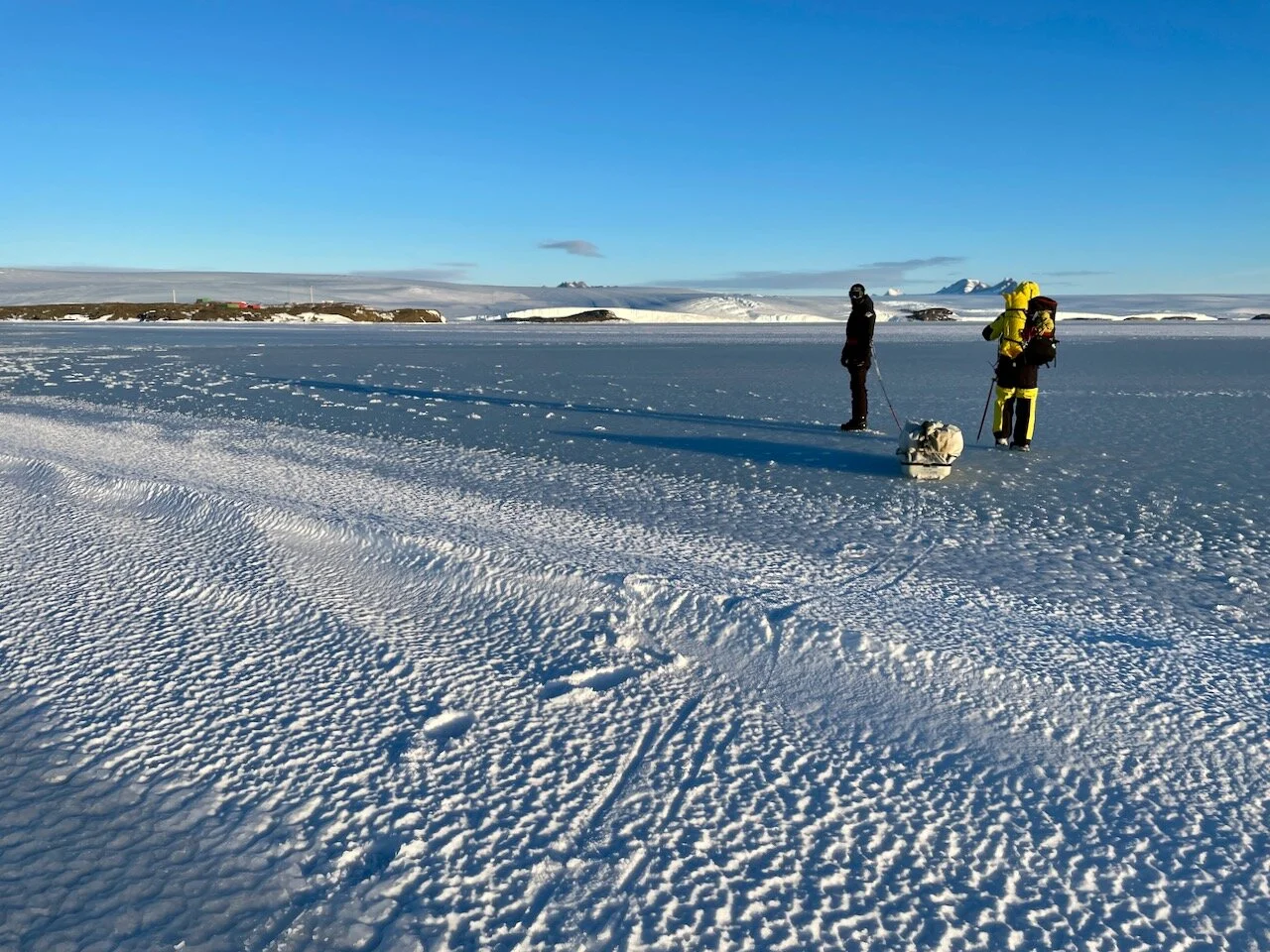Mawson Station is notoriously windy, with katabatics rushing down from the icy plateau. We’ve experienced windy and cloudy days most days the last couple of weeks, so it was with great relief and excitement that last Thursday, the day planned to test drill the sea ice, was sunny with little wind. We started the morning with some training in the use of a sea ice rescue platform, which is really quite limited down here as it’s really only good for close to shore rescues, and we wouldn’t be heading out onto the sea ice if it couldn’t hold our weight. But it’s one of those ‘let’s-see-how-many-safety-measures-we-can-put-in-place-even-if-it’s-totally-impractical’ kind of things that government departments like to do. I had a couple of willing participants to practice rescuing each other, and if nothing else, it’s entertaining and makes for some funny photos with the operator on this thing in a dry suit. Of course I was up for that! In fact, it was a requirement to use it for the initial sea ice test drilling, even though we could see the ice was very thick with no chance of breaking through. With 60cm sea ice thickness in Horseshoe Harbour, we had the go ahead from the station leader to head out into our station recreation area to test drill that.
In the afternoon I headed out with two keen assistants into the recreation area a few kilometres out, winding around islands, drilling and measuring as we went. Snow Petrels nest among the rocks on the islands and they’d often come out and fly around us, either to tell us to get away from their territory, or because they were curious, or maybe both. They are quite a small sea bird and a lovely white. There were some interesting features on our trip such as one section of sea ice that had frozen in rolling parallel waves, an iceberg in suspended animation frozen into the sea ice, and very climbable looking rock walls with seams running over them. In places the wind had blown the snow off the ice so it was slippery but mostly the snow on the surface provided good grip.
We drilled around large cracks in the ice that can open up and refreeze, but by now, with our consistently col temperatures, the sea ice will just get thicker and stronger until the weather warms again. Our circuit finished down the west side of West Arm and headed toward the dramatic ice cliffs as the sun was becoming more golden. Coming off the sea ice there was a frozen melt pool of clear ice, with cracks and bubbles trapped in the ice under a polished smooth surface. It was a great day.

















